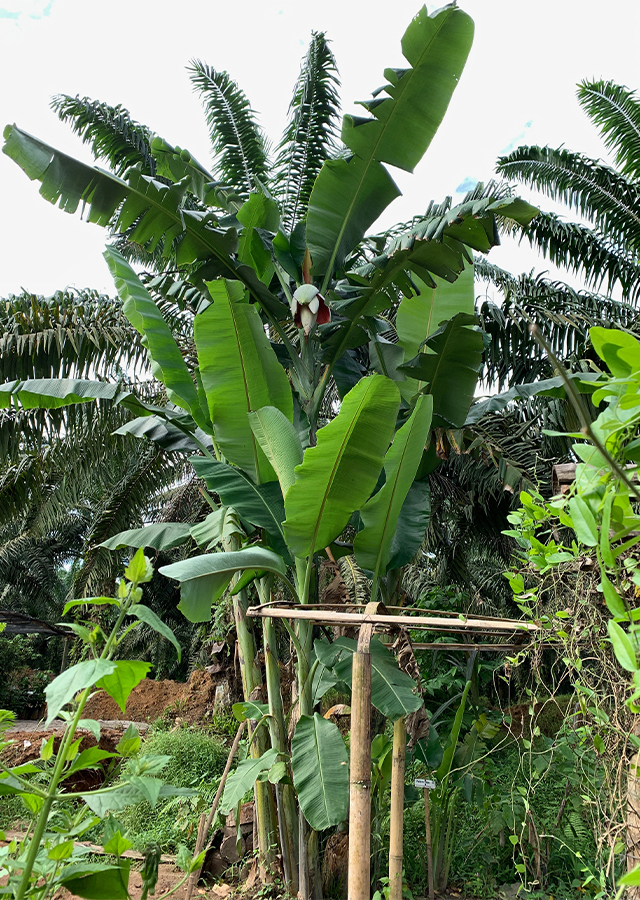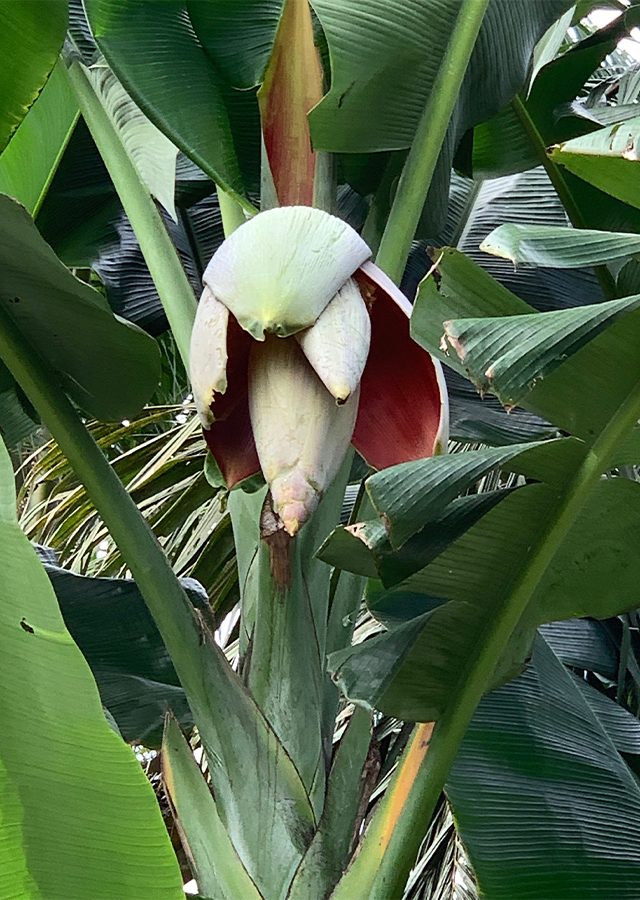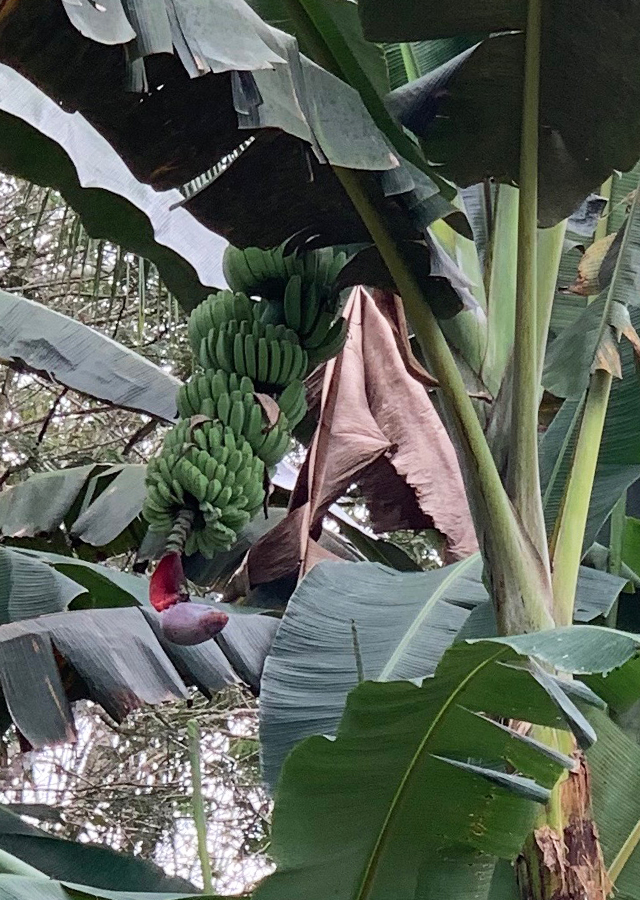Saba Banana
Musa acuminata x Musa balbisiana
Musaceae
Location in our garden
Palm



Synonym
Habitus
Herbaceous. A large, robust, shiny green pseudostem with a girth of 60–90 cm and reaching heights of 3–7 m.
Part Used
Fruit
Growing Requirements
Need Shade
Habitat
Terrestrial
Overview
Saba banana, a triploid hybrid banana cultivar originated from the Philippines. Saba banana is the most important cultivar for local markets in the Philippines and Indonesia but less so elsewhere. Saba bananas can be eaten raw or cooked.
Vernacular Names
Pisang abu Nepah (Malaysia), Cardaba (Philippines), Kluai hin (Thailand), Chuoi mat (Vietnam), Praying hands (Florida-United States), Dippig (Hawaii).
Agroecology
Saba banana like other banana cultivars is best grown in warm but moist areas, with temperature ranging from 18°C to 35°C and mean annual rainfall of 2,500 mm evenly distributed through-out the year. Nonetheless due to their Musa balbisiana charac-teristics they tolerate dry soils and colder condi-tions better than other cultivated bananas.
Morphology
- Pseudostem - large, robust, shiny green with dark brown underlying pigmentation and watery sap, with 4–8 suckers.
- The leaves - large, drooping, dark blue-green with pale green dorsal midrib and inward curved petiole canal.
- Flower - compound tepal yellow, style straight and stigma and ovary cream coloured.
- Fruits - 8–13 cm long and 2.5–5.5 cm in diameter. Bunch fruits weight 14–22 kg with 7–12 hands per bunch and 12–20 fingers per hand.
Cultivation
- The principal method of banana propagation is divison of suckers or pups which arise from the base of the main stem or from the underground corm.
- If the pup has nice roots separated from the parent plant from its own development, you can divide it and plant it as a new banana plant.
- However, most kinds of bananas are sterile and don't contain seeds.
Chemical Constituents
- Pectin, sugar, fat, protein.
- Flavonoid (leucocyanidin), phenolic phytochemicals.
- Non digestible fibers (including cellulose, hemicellulose, and alphaglucans).
- Phytosterols, tryptophan, threonine, Isoleucine, leucine, lysine, methionin, cystine, phenylalanine, tyrosine, valine, arginine, histidine, alanine, aspartic acid, glutamic acid, glycine, proline, serine.
Traditional Medicinal Uses
- High blood pressure and stroke risk have been reduced.
- Restore normal bowel movement to deal with both diarrhea and constipation. Protection from ulcers & Heartburn remedy, against neurodegenerative diseases (Alzheimer’s disease).
- Cholesterol-lowering effect, booster of kidney health , strength and immunity.
- The study indicates that the extract of saba banana corm has the potential to be developed as an anti-inflammatory medication.
- The unripe fruit decoction is ideal for diarrhea and scurvy.
- The plant's juice is used to heal hemorrhages, cholera, epilepsy, and hysteria.
- For painful menstruation, the flowers are taken in regular doses as an injection.
Part Used
Reference Sources
- Castillo-Israel, K. A. T., Baguio, S. F., Diasanta, M. D. B., Lizardo, R. C. M., Dizon, E. I., & Mejico, M. I. F. (2015). Extraction and characterization of pectin from Saba banana [Musa'saba'(Musa acuminata x Musa balbisiana)] peel wastes: A preliminary study. International Food Research Journal, 22(1), 190-195.
- Lustre, A. O., Soriano, M. S., Morga, N. S., Balagot, A. H., & Tunac, M. M. (1976). Physico-chemical changes in ‘Saba’bananas during normal and acetylene-induced ripening. Food Chemistry, 1(2), 125-137.
- Tin, H. S., Padam, B. S., Kamada, T., Vairappan, C. S., Abdullah, M. I., & Chye, F. Y. (2016). Isolation and structure elucidation of triterpenes from inflorescence of banana (Musa balbisiana cv. Saba). International Food Research Journal, 23(2), 866.
- https://www.promusa.org/Saba.

